Episode 279: HubSpot Forms Best Practices (for Building Marketing Campaigns)
Welcome to HubShots Episode 279: HubSpot Forms Best Practices (for Building Marketing Campaigns) This edition we dive into:
If you're new to HubSpot, we guide you on where to start, how to do it right, and train you to make the most of the platform.
Review your HubSpot portal to uncover issues, spot growth opportunities, and ensure you're maximising its potential.
Unlock business growth with automation and attribution. Implement best practices and execute marketing campaigns.
HubSpot On-Demand
HubSpot Training
HubSpot Websites
HubSpot Campaigns
Virtual HubSpot Manager
7 min read
XEN Systems 2 September 2022 11:08:32 AM
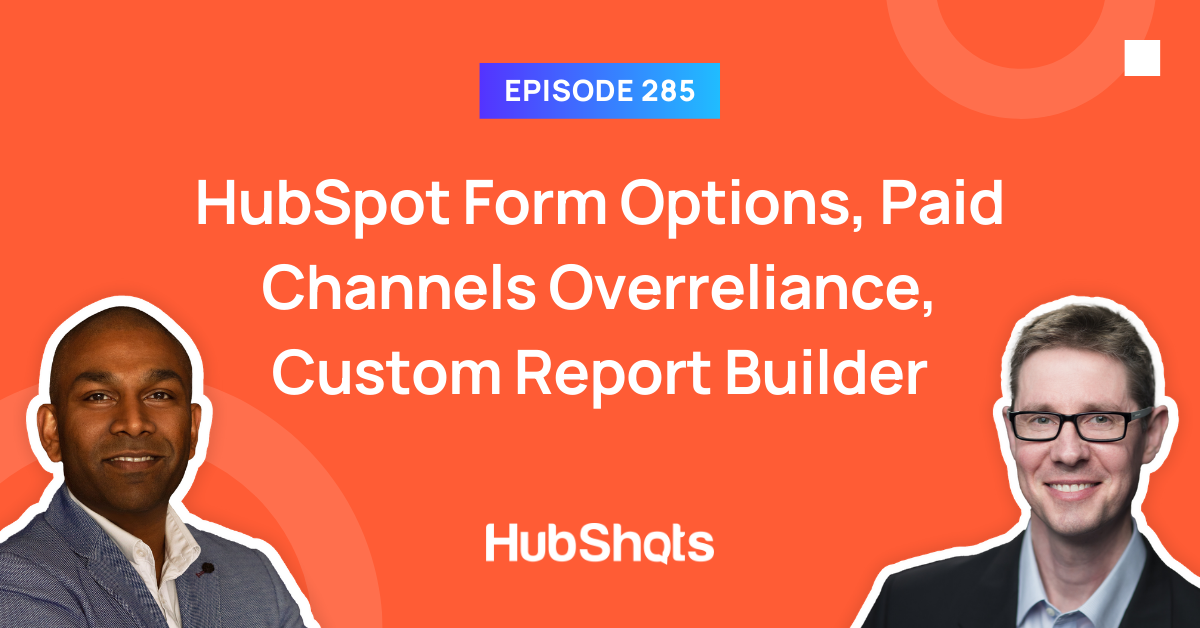
This edition we dive into:
You can watch this episode on our YouTube channel (or just listen to it on our YouTube audio channel)
We’re also available on Spotify or Soundcloud if that’s easier for you.
Did a colleague forward this episode to you? Sign up here to get yours every Friday.
Please forward this on to your work colleagues.
Recorded: Wednesday 24 August 2022 | Published: Friday 02 September 2022
Over the past few years I’ve reduced my connection points down to just a few key inputs/channels:
I’m hardly ever on LinkedIn, Facebook, Instagram, WhatsApp, TikTok, Snap, etc and I almost never answer my phone if I don’t recognise the number…
Why do I mention this?
(Well, it’s not just to highlight that I’m out of touch…)
Because, whilst I’ve limited my channels, I still look after a healthy software spend for our company each year - in the order of $100K across tools and platforms. So for many software vendors we fit their ideal customer profile - and reaching me is important.
I suspect I’m not unique here. There are lots of business owners, with health budgets to spend, who aren’t on the usual channels.
Here’s the question for your marketing and sales efforts: are you still catering for the ‘old school’ (or perhaps ‘distraction protective’) contacts with your activities and processes (or have you neglected them chasing the latest shiny objects?).
When I think back over just the last year of new platform spend, the biggest influence on my awareness of, and purchase of them has been:
A few (obvious) notes:
One final point - it’s easy to fall into the trap of availability bias and assuming that everyone else’s behaviour matches what comes to your mind first. (And then develop a confirmation bias to it)
Part of analysing your own behaviour needs to include listing the things we don’t do, so that we are prompted to test whether other people do them (eg I don’t use Facebook, but let’s test it to check if other people do… etc)
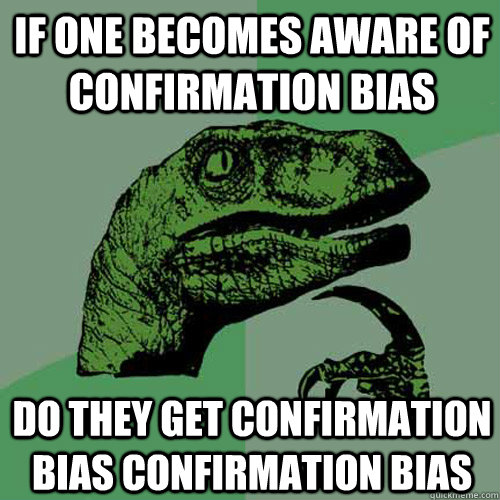
Here’s a few quick items of interest we noticed:
This is probably one of the most confusing options on any HubSpot page:
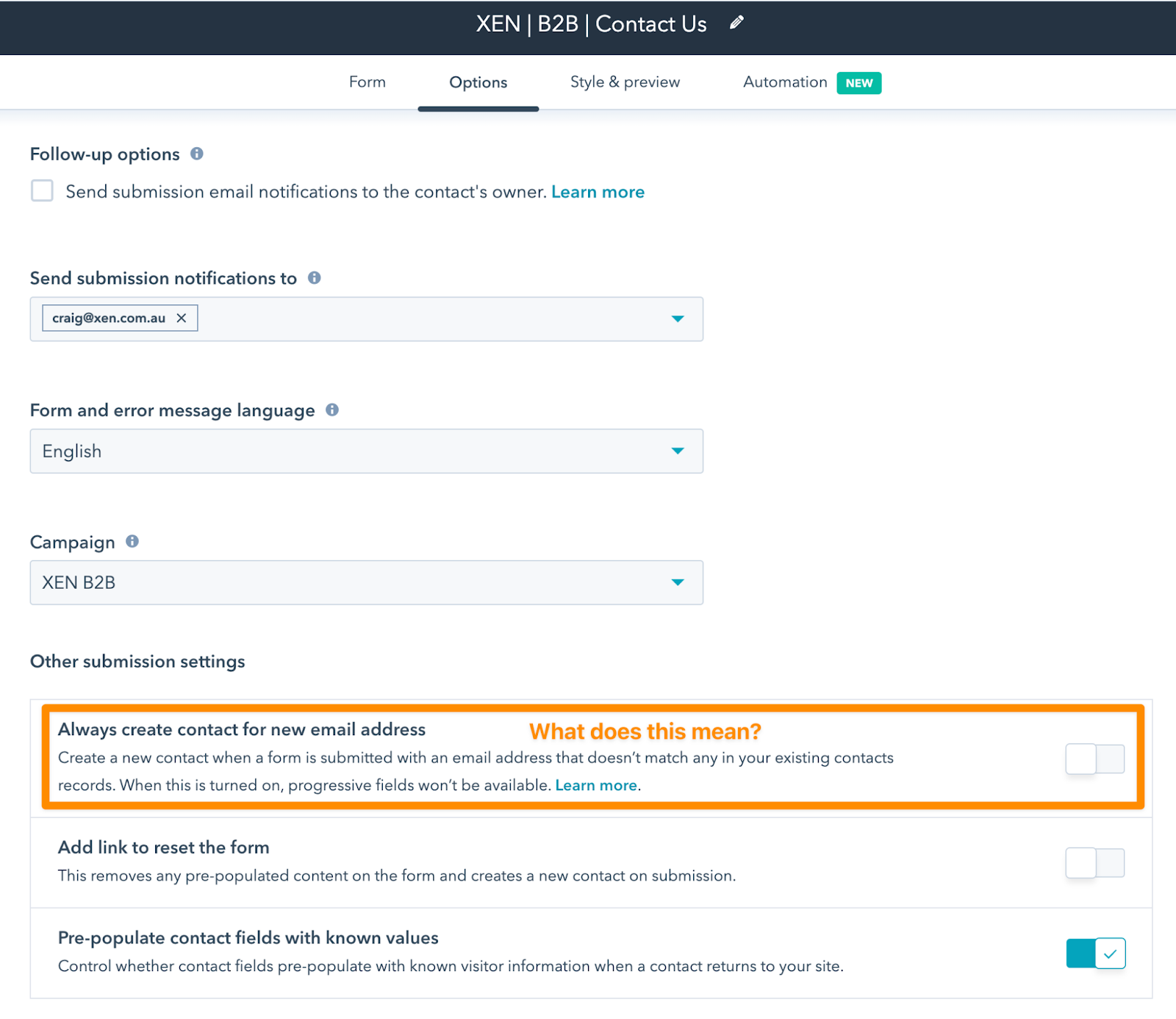
When you first read the setting description you might think ‘of course I want to create contacts for new email addresses!’...
However, this setting is relevant to a known contact who returns to your site, but then submits a form with a new email address (perhaps they use their personal email address this time, versus their work email address). In this situation what do you want to happen? Do you want to create a second (ie new) contact - OR, do you want to update the existing contact (ie with an additional email address).
We’ve recorded a quick video walking through this with a worked example.
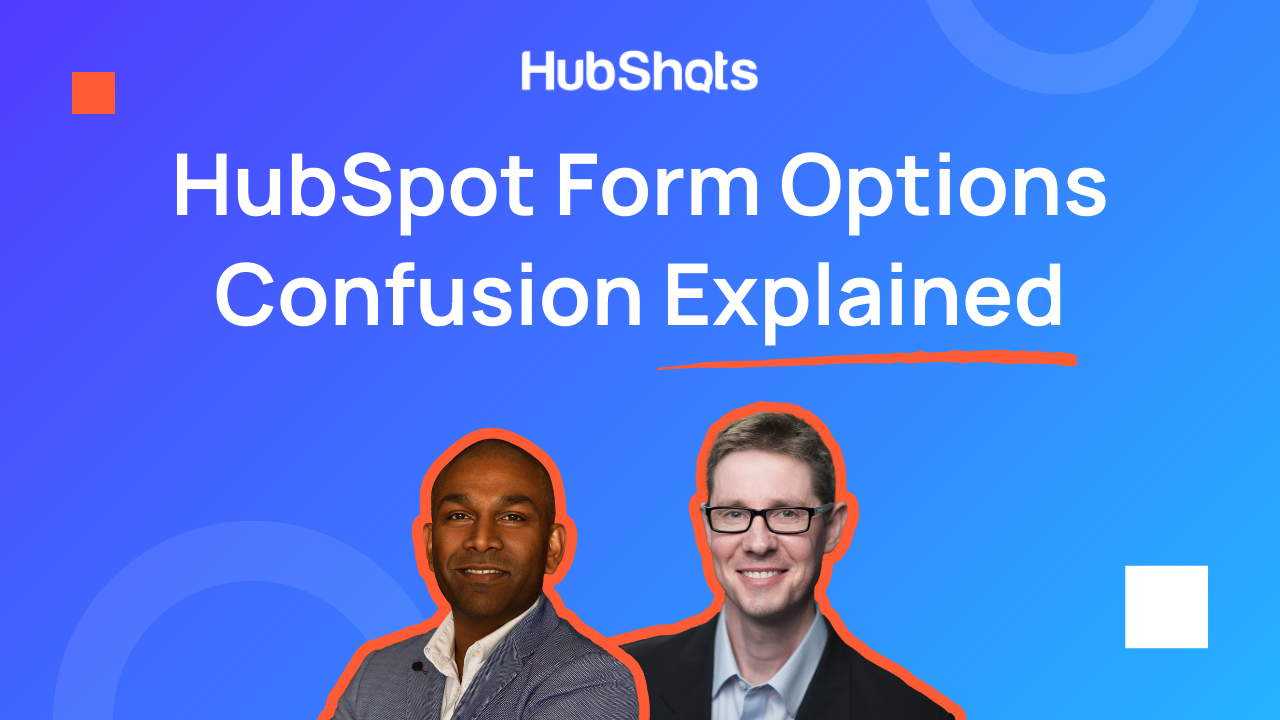
Aside: this option used to be referred to as ‘Obey cookie settings’ (or similar) many years ago…
In most cases you’ll want to leave this unticked (as per the screenshot above).
Exceptions are when the form is used in a browser page that is submitted by lots of different people (eg a computer in a common area that is used by lots of people) or as a common device (eg iPad signup at a trade show).
2 parts to remember
1. Finding prospects
In this example we are looking for Australian Automotive or Building Material businesses.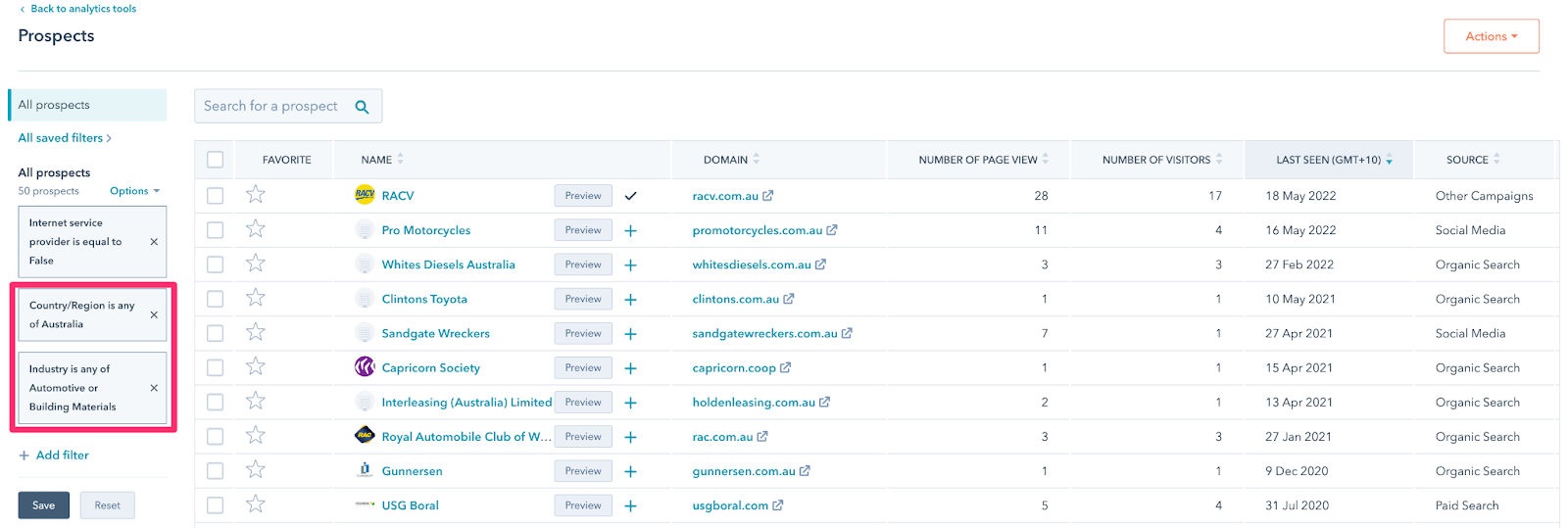
2. Turning on prospect notifications
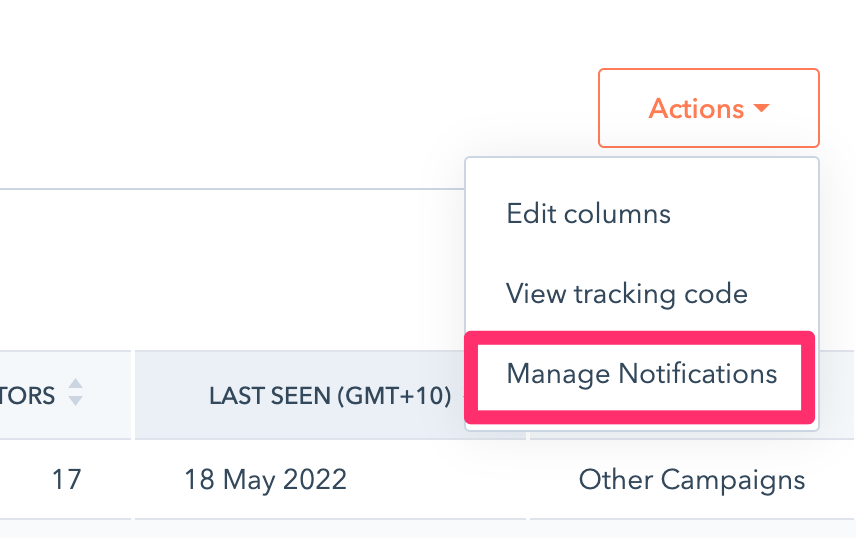
HubSpot has a good Knowledge Base article with further details.
This option can be good or bad depending on your situation…
For example, if your team are often forwarding on client emails they’ve personally received, into a generic support inbox, then turning this option on can be a huge benefit.
However, for other scenarios (eg if a client forwards on an email from another company) you wouldn’t want this enabled:
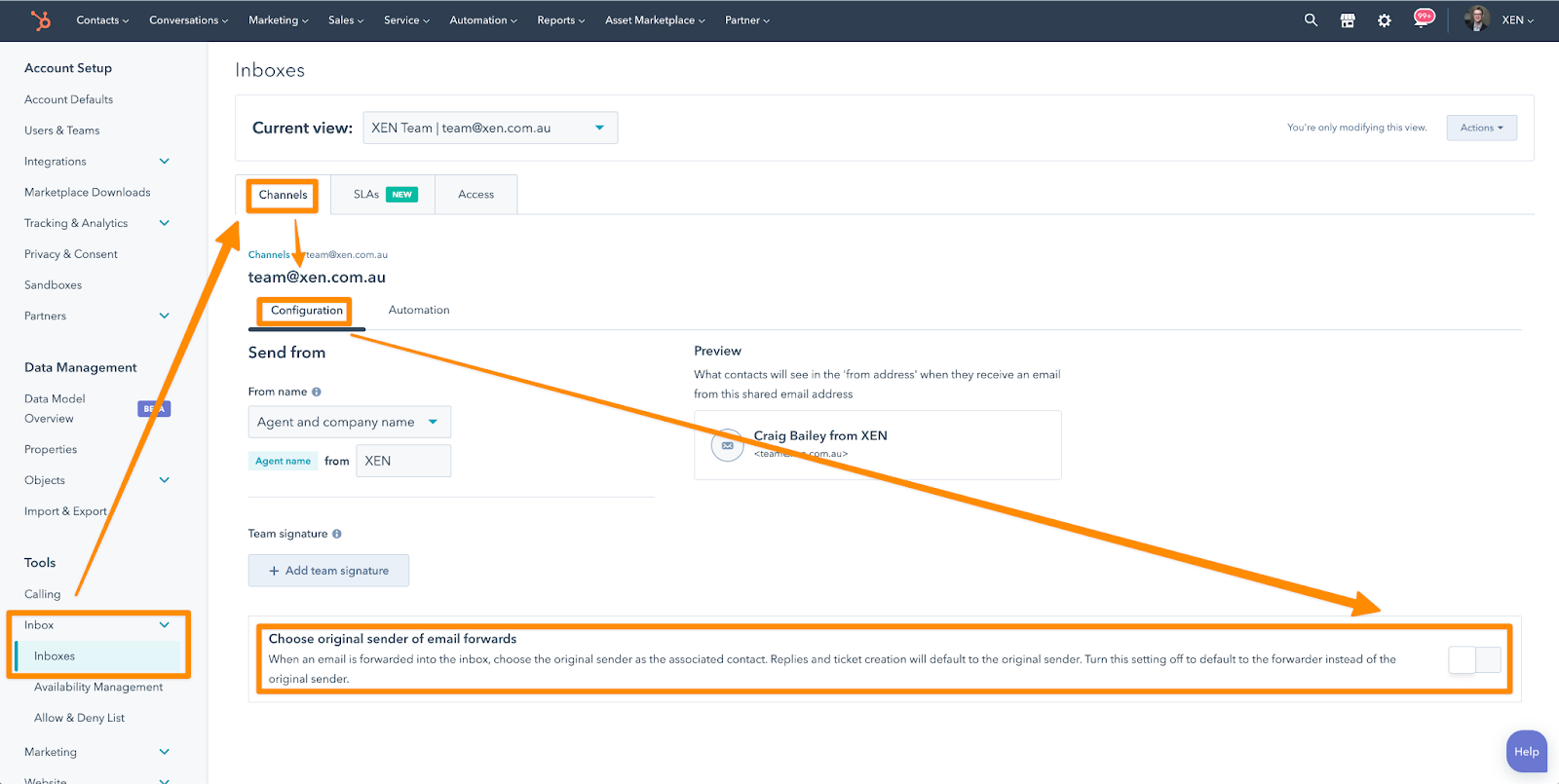
If you need to cater for both, it might be worth setting up two Conversations Inboxes - one for staff to forward emails to, versus a second that you provide to clients.
This is a feature of workflows that helps keep out contacts (or deals or tickets etc) that meet a particular criteria at any point in the workflow set of actions.
This means it could fire straight away (eg a contact enrols because they meet the entry criteria, but then immediate unenrolls because they meet the unenrollment criteria), or can come later (eg a contact meets the criteria after a few workflow actions have completed - such as booking a demo after receiving a nurture email).
You can find it in the Settings tab:
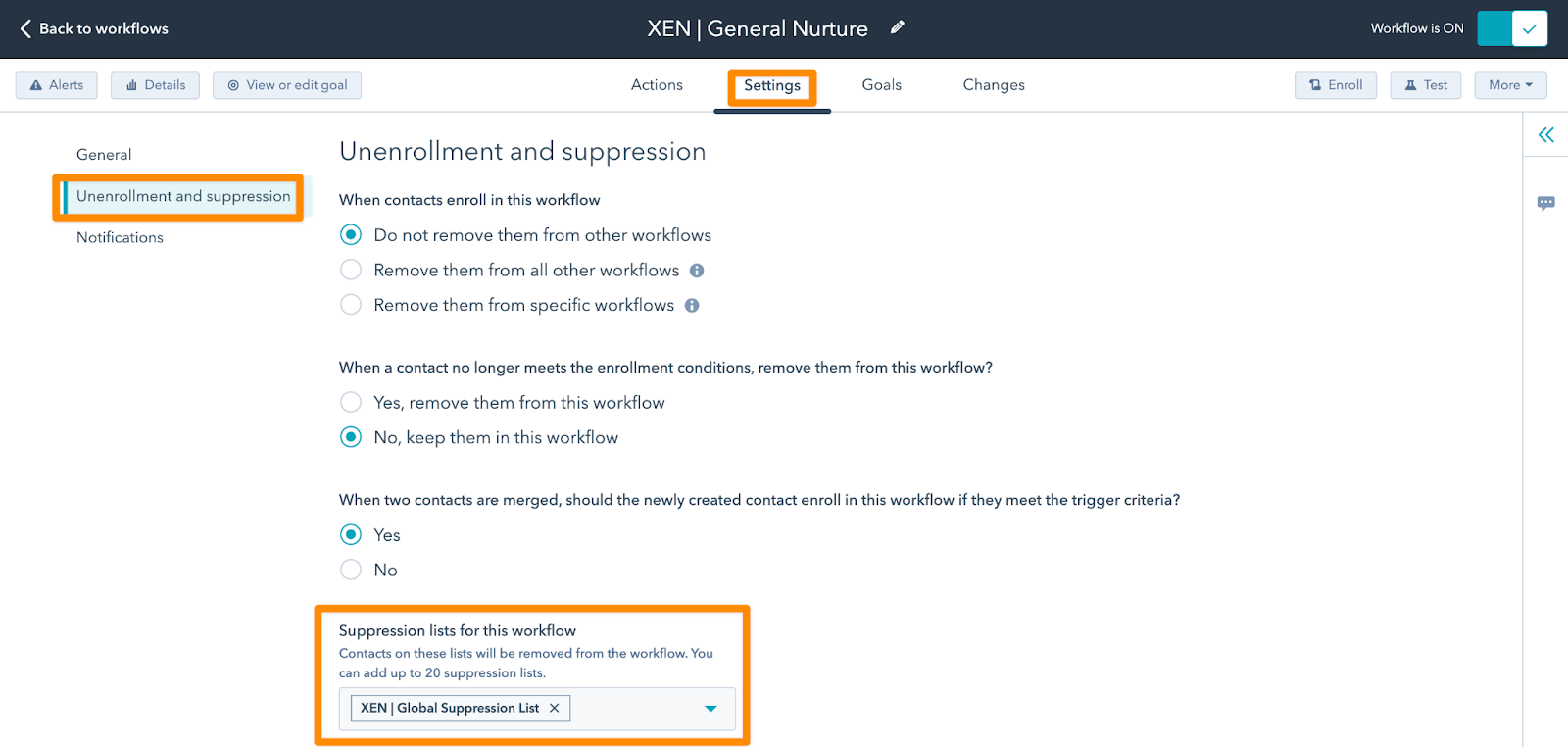
We build specific Suppression lists that we use in Workflow enrollments. We cover Suppression lists in more detail in episode 280.
A suggestion:
Notes:
On a side note: I really wish the Lists tool worked with Deals, Tickets and other objects (ie not just Contacts and Companies) - I’d love to be able to prepare lists of Deals that could be unenrolled from Deal workflows, rather than having to build the criteria in the Deal workflow.
It can be stressful if you rely on paid traffic channels as your single source of leads.
In this example we see over 75% of new contacts are from paid sources:
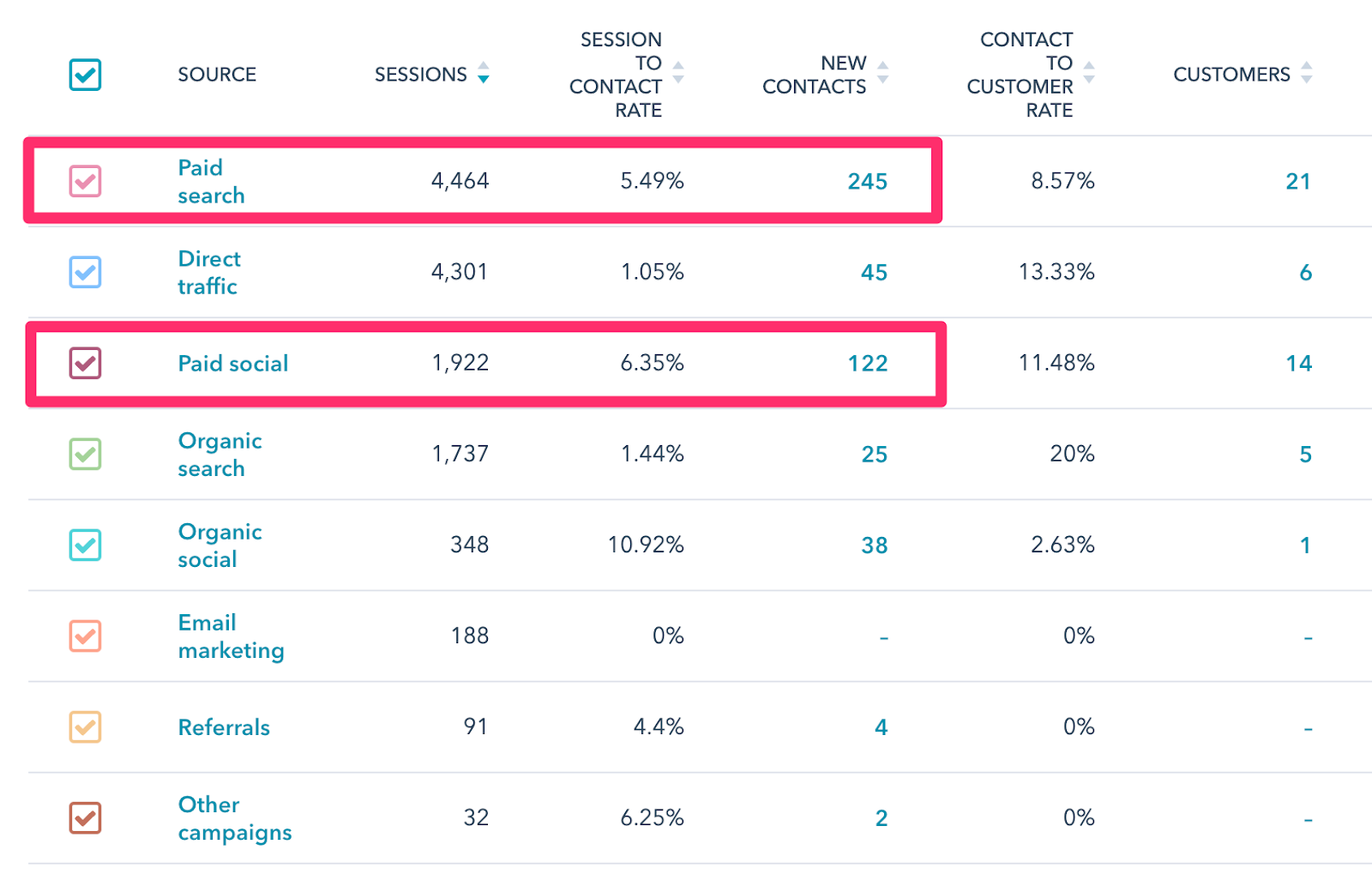
This is concerning as if things change then you essentially have little to no business.
It is important to evaluate and build your assets like content (be it pillar pages, videos and other assets) so you can attract the right people to your business.
If not you will most likely find you live in a world that’s feast or famine and you are often worried where your next contact and conversation will come from. Not to mention the quality of that contact and understanding where they are in the buying process.
So we want to encourage you to start looking at other sources of traffic to your business. It could be as simple as a partnership to begin with or street/location signage. Don’t forget that not everything is online and some practical things can help too!
We’ve started recording quick videos about using HubSpot’s Custom Report Builder tool.
The first 3 are available on the HubShots YouTube channel.
We start with the simplest possible report - a bar chart of contacts created per month, and then how to filter:
Next we look at using the new Date Part feature in Custom Reports:
See also this HubSpot Knowledge Base article on using Date Part
And the start drilling into details using the Break down by option:
In a moment of brain-fog, I fell for this:
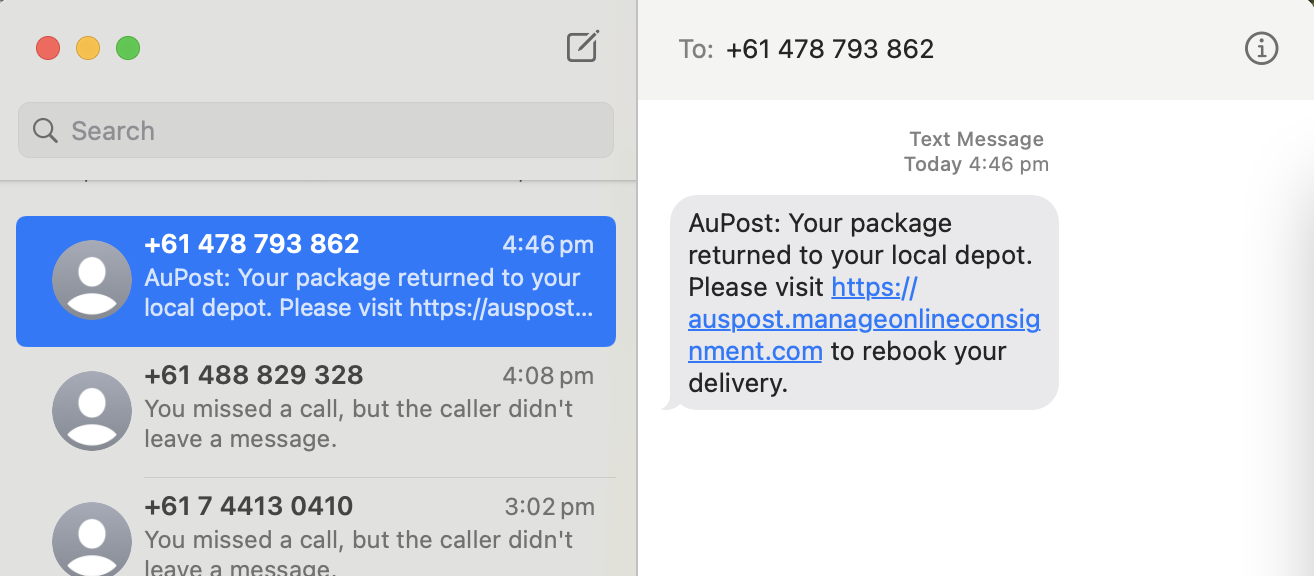
A quick look at this should immediately highlight that it’s bogus, so why did I fall for it? Here’s why:
The last point is probably the most relevant - I was primed to be on the lookout for a delivery, so this just slipped right past my usual scam filters… their timing was perfect.
Fortunately though, Chrome saved me:
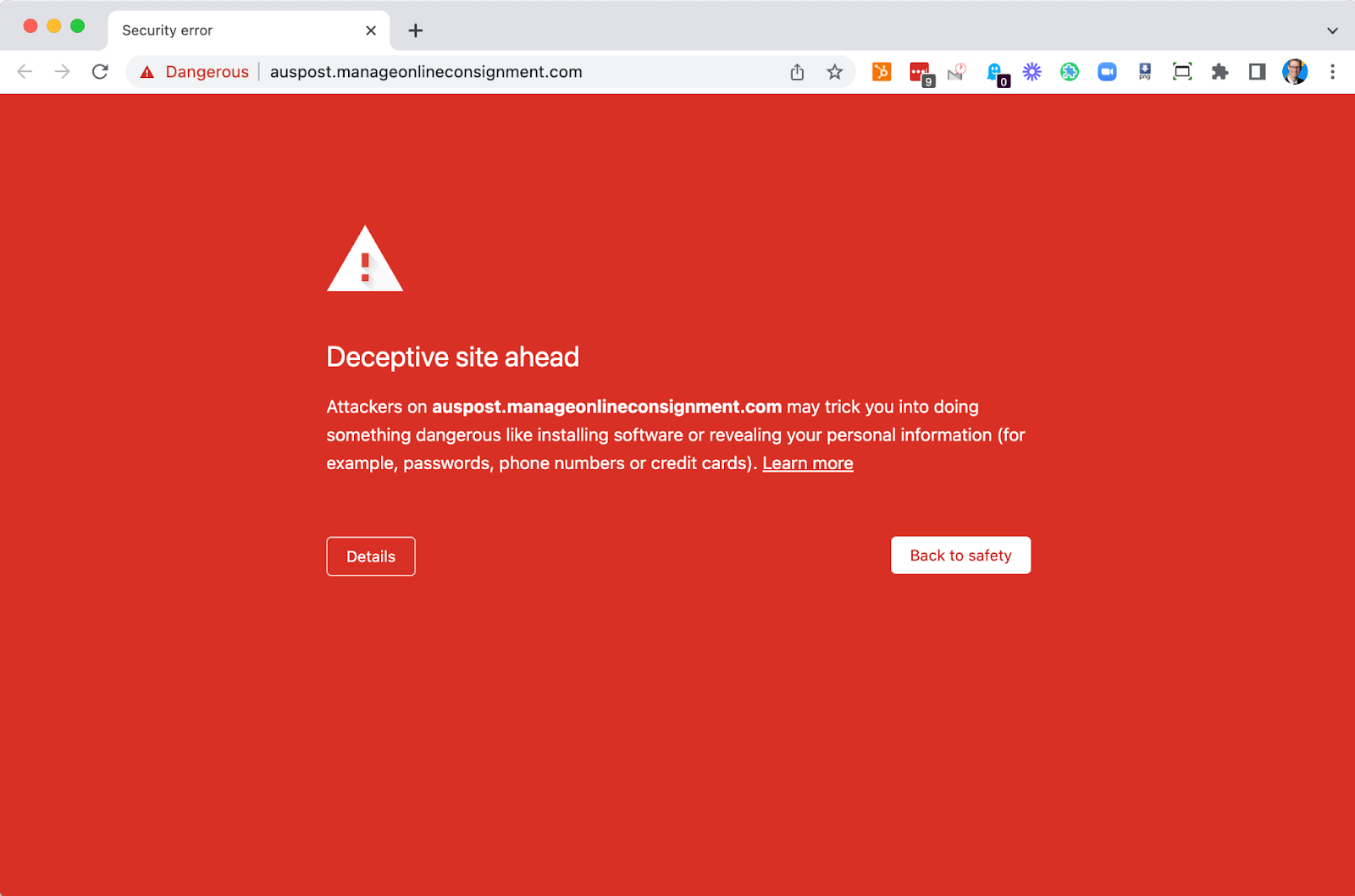
As soon as I saw the message I of course did this:

Why do I share my gullibility with you? Simply this - a tired mind is easy to trick.
A reminder to myself for when I’m reviewing attribution reports at the end of the day, looking for insights - it’s easy to believe things you are expecting to find.
“What’s the difference between a novice air plane pilot and a veteran? Ask any expert and they’ll tell you: A beginner relies on sight and gut feeling, while an experienced professional relies on instruments.”
― Perry Marshall, Ultimate Guide to Google AdWords: How to Access 100 Million People in 10 Minutes
Covers approaches to reporting, and then dives into the tools.
Our new HubSpot QuickCheck service has been popular with companies who are looking for a quick review of their HubSpot portal to understand:
If you’re asking yourself any of these questions, our QuickCheck call might be ideal. Here’s the details:
You can view more details and book in your session here.
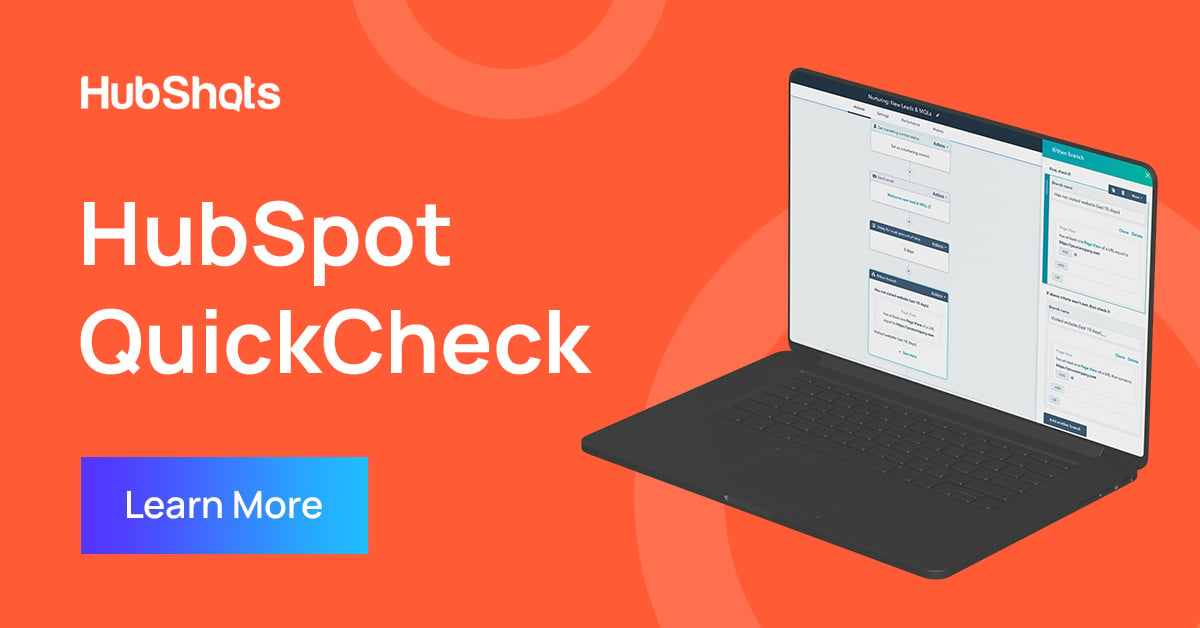
Connect with HubShots here:
Connect with Ian Jacob on LinkedIn and Craig Bailey on LinkedIn
HubShots, the podcast for marketing managers and sales professionals who use HubSpot, hosted by Ian Jacob from Search & Be Found and Craig Bailey from XEN Systems and XEN Solar.
HubShots is produced by Christopher Mottram from Podcastily.
Please share this with colleagues - it helps us improve and reach more marketers.
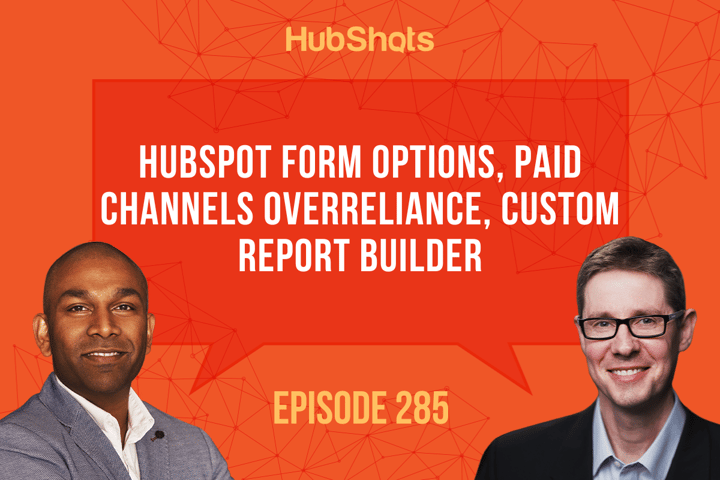
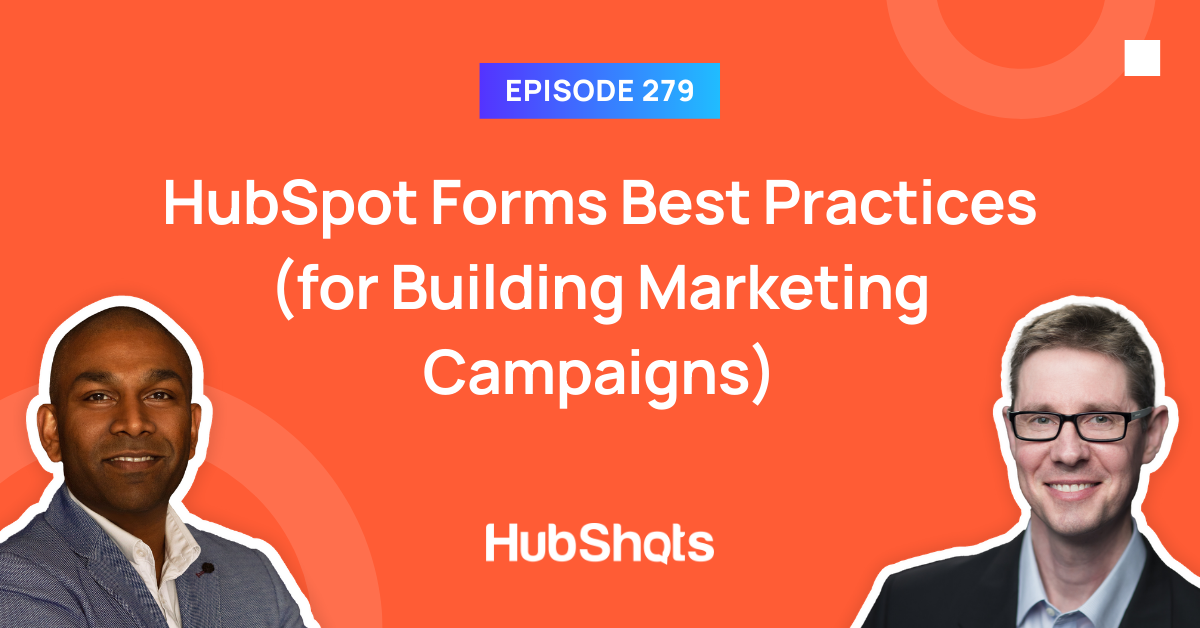
Welcome to HubShots Episode 279: HubSpot Forms Best Practices (for Building Marketing Campaigns) This edition we dive into:
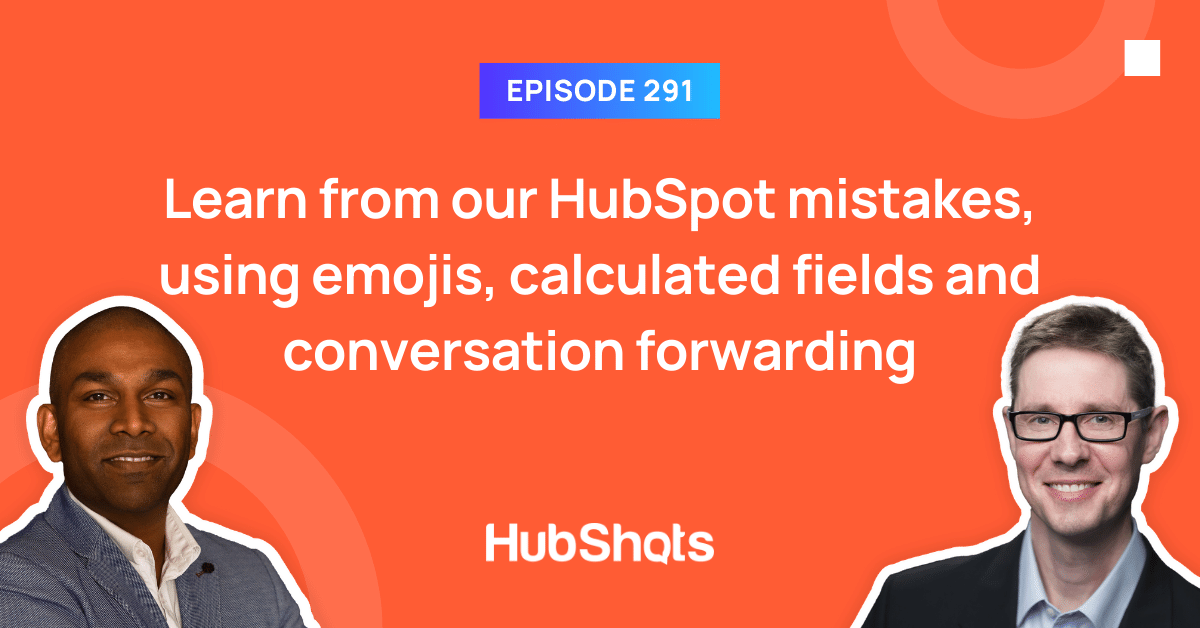
Welcome to HubShots Episode 291: Learn from our HubSpot mistakes, using emojis, calculated fields and conversation forwarding
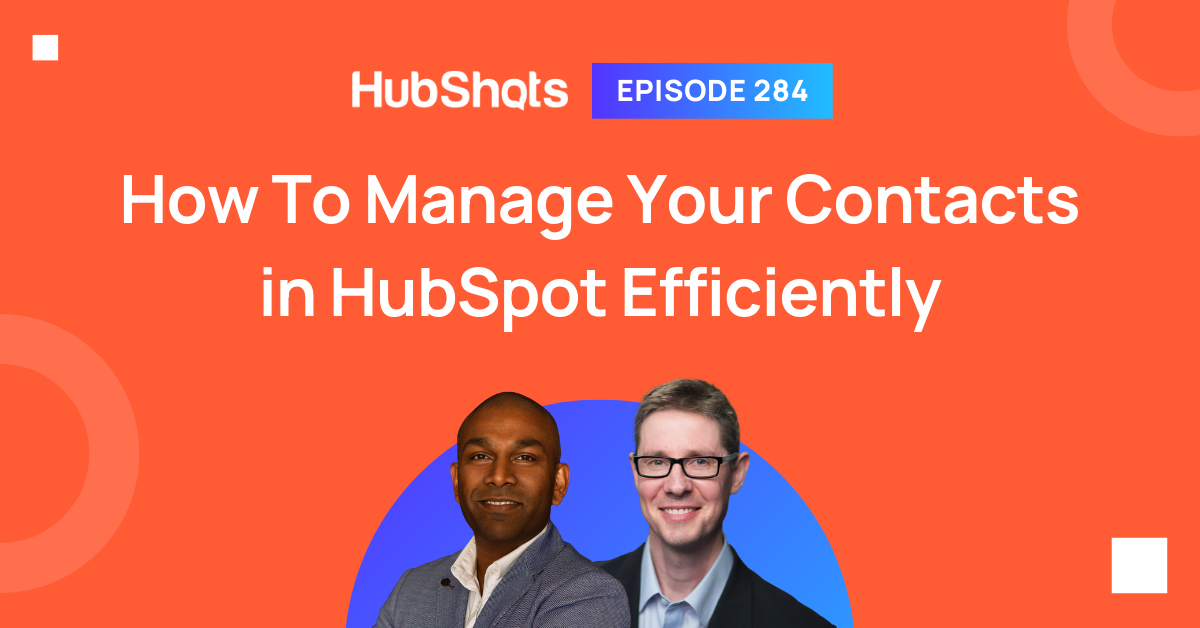
Welcome to HubShots Episode 284: How To Manage Your Contacts in HubSpot Efficiently This edition we dive into: